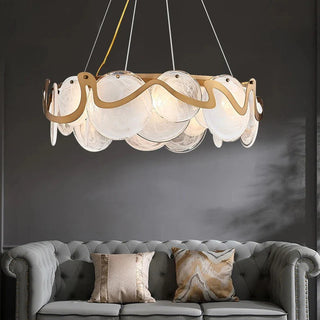The light is off, and the bulb suddenly flashes in short flashes - for the first time this phenomenon can even scare. LED bulbs can "blink" even when the light is on. Visually, this is not always noticeable, especially if there are several light sources in the room, but when shooting video, everything is clearly visible.
Unlike incandescent bulbs, which flicker before they burn out, LEDs can flicker for a long time. But this gets on the nerves of many, so a blinking light bulb is not the norm in any case. Consider the main causes of flashing LED lamps and tell you how to fix them!
Reason 1 - corny bad light bulb
In supermarkets and all sorts of fixed prices, you can find lighting sources for less than one dollar. We do not claim that all cheap goods are a priori of poor quality. But products that cost 3-4 times cheaper than conventional LED lamps will not work well - you should put up with it. The thing is that instead of LED drivers, which stabilize the incoming current and provide a continuous glow, cheap lamps have low-capacity quenching capacitors. They perform the same function as drivers, but exhaust their resources much faster. There are even disposable LED lamps in which the capacitor fails after a few hours of operation.
The solution to this problem is also banal - do not buy cheap light bulbs, which in fact turn out to be not so cheap. It is more profitable to buy a reliable and high-quality product once than to spend a dollar every week on a new light bulb. And if you consider that it usually does not stand alone in the house, senseless spending grows exponentially.
Reason 2 - Illuminated switch
How does this relate to the flickering of the light bulb? The fact is that illuminated switches have an additional electrical circuit. She "pulls" the voltage for the driver and causes flashing when turned off. This is the most simplified explanation - we did not go into the features of the operation of electrical circuits and diode bridges. It is important that it is the backlight of the switch that prevents the energy-saving light bulb from working correctly.
There are three ways to solve this problem. The easiest is to disassemble the switch and remove the backlight. But you can do without it by connecting an additional ceramic capacitor and resistance to the fixtures (the calculation is individual and depends on the power). You can also put a flicker protection and elimination unit. We will not describe all the stages of work - for electricians this is an elementary task, and for those who have never worked with electricity, it is better not to even get into this jungle. Call the master - and that's it.
Reason 3 - low voltage in the network
The figure of 220 volts is only nominal. Most often, in private homes, in fact, the voltage in household electrical networks can be higher or lower than this value (the second happens much more often). There are many reasons - voltage drop across the entire power line, insufficient transformer power, phase imbalance ... Fortunately, power grid users can easily solve the problem of power grid interference specifically in their home by installing a stabilizer at home. This device will never be redundant. It not only equalizes the voltage, eliminating the flashing of bulbs, but also protects electrical appliances during sudden power surges.
For country houses, we recommend buying LED lighting sources with a wide range (120–250V), which work stably during power surges.
Reason 4 - wiring errors
Alas, not all masters have sufficient qualifications. When connecting the elements of an electrical circuit, some confuse zero and phase. This happens especially often when working with old-style wiring, where there is no conductor marking. It is the “inverted” connection that leads to constant power outages, and, accordingly, to the lamp flashing.
To solve the problem, you need to reconnect the wires in the correct order: the “neutral” wire goes to the lamp, and the “phase” goes to the switch. This is also a job for a master electrician.
Reason 5 – High Frequency Interference
They are produced by some types of household appliances that generate radiation with a frequency of 2.4 GHz. These can be microwave ovens, cordless phones, satellite dishes, etc. As a rule, these are old-style equipment. In the presence of high-frequency interference, not only LED bulbs react to them, but also other household appliances: the TV screen flashes, the speakers make noise. You can eliminate interference by installing special filters in the power grid, which are sold in electrical equipment stores.
What happens if you don't change a blinking light bulb?
If you are not annoyed by the constant flashing of lights in the room, here is another argument in favor of fixing the problem as soon as possible. Back in the 60s of the last century, scientists proved the negative effect of light pulsation on the body. They analyzed the physiological and psychological state of schoolchildren who studied in rooms with normal and flickering lighting. By the end of the day, children from the second group were more likely to complain of dry eyes, headaches, and experienced an inexplicable loss of energy. After replacing the pulsating lamps with normal ones, the children got rid of the discomfort. So the flickering of light bulbs affects our health, even if we do not notice it.









